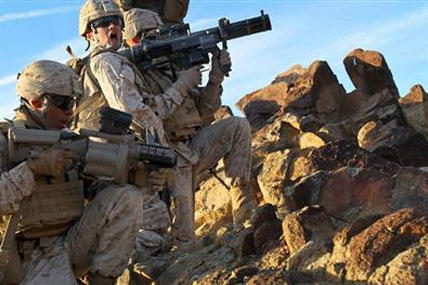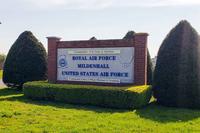MARINE CORPS AIR GROUND COMBAT CENTER TWENTY NINE PALMS, Calif. — Since 2001, the Combat Center has provided comprehensive and collaborative training for combat operations in the Middle East. Training exercises have evolved from the Combined Arms Exercise to what is known today as Enhanced Mojave Viper.
As the demands of war have evolved, so has training. The Corps is taking a new step in training evolutions and predeployment preparation. The EMV training cycle is going away and the Integrated Training Exercise is taking its place.
ITX will consist of many of the same training objectives as EMV. The exercise will still focus on preparing Marines to fight and win in Operation Enduring Freedom. Additionally, Marines will be trained to support general contingency operations for Unit Deployment Programs and Marine Expeditionary Units.
“It is essentially a melding of the (Marine Air-Ground Task Force),” said Col. Kip J. Haskell, commanding officer, Technical Training Exercise Control Group. “Consisting of 129 integrated events involving the (Ground Combat Element, Logistics Combat Element and Air Combat Element.)”
MAGTF-Training Command initially planned, staffed and briefed the future training syllabus to concur with exercise design and training objectives. TTECG is currently completing the necessary requirements to build, publish and execute those mission-essential tasks contained in the ITX exercise design, Haskell said. As the requirements and missions for the Marine Corps changed during Operation Iraqi Freedom and OEF, so did the training requirements and support at the CAX, Revised CAX, Mojave Viper and EMV training evolutions.
CAX began in 1975 as a 23-day long exercise developed to train Marines in essential combat skills and allowed for both brigade and battalion-sized live-fire and maneuver exercises. During CAX, Marines were able to move on foot and mounted on vehicles through live-ordnance impact areas. Most air and ground weapons found commonly within the MAGTF were able to be employed as well. CAX not only prepared Marines for desert warfare, but other terrains as well.
In 2004, in preparation of OIF, RCAX was next in the training evolution. RCAX was known as a leaner and meaner CAX due to training being cut in half and tailored to suit the needs of the Iraq-bound warrior. It no longer consisted of typical large-scale battlefield scenarios. It was modeled to resemble the occupation mission in Iraq and less like a fast-moving invasion. Marine leaders said the maneuver training that was CAX’s signature was simply not a priority for occupation duty in Iraq.
MV was a 30-day long combination of the RCAX and the Security and Stability Operations training formerly conducted at March Air Reserve Base, Calif. The RCAX portion went from 22 days of training with a three-day final exercise, to 14 days of intense training involving a series of progressive live-fire exercises. SASO, the once Marine Corps Warfighting Lab experiment, became 10 days of training involving role players, facilities and scenarios that mimicked modern-day combat zones. The two parts were concluded with a battalion-level final exercise that lasted three days.
“The main difference between CAX and EMV/ITX is the integration of GCE, LCE and ACE Mission Essential Tasks and the inclusion of METs associated with stability operations in a full spectrum operational design,” Haskell said.
In 2009, the training evolved once again to EMV, which prepared units for stabilization and combat in Iraq to EMV which was the culminating pre-deployment training for units deploying to Afghanistan.
“EMV’s greatest contribution to the Corps was preparing Marines to fight and win in OEF,” Haskell said. “And the integrations of the MAGTF into a combined arms full spectrum exercise that can fight and win in any future contingency operation.”
The nature of modern-day war continually changes. With that, the Corps must rise to the occasion and adapt and overcome. The Combat Center and MAGTFTC are ensuring Marines stay one step ahead of the enemy.
“This is the best training venue where combined arms training, in a full-spectrum environment, can be performed,” Haskell said. “ITX will shape the Corps’ forces still deploying in support of Operation Enduring Freedom and any future combat operations.”




























